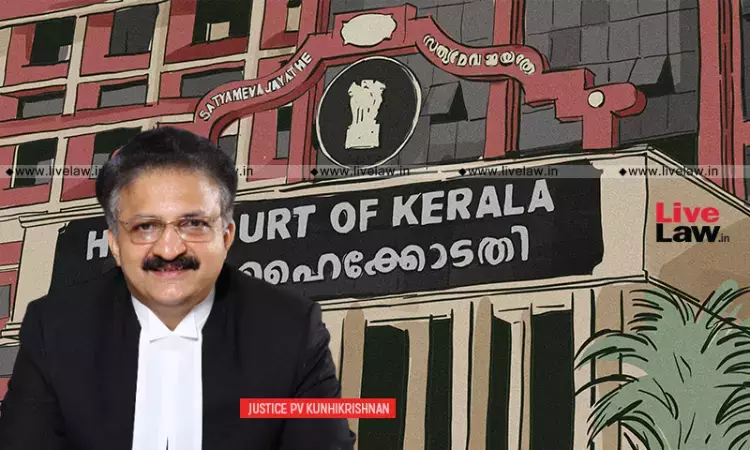- Home
- /
- High Courts
- /
- Kerala High Court
- /
- S.256 CrPC | Power To Acquit...
S.256 CrPC | Power To Acquit Accused Can't Be Invoked By Executive, Sub-Divisional Or District Magistrate U/S 133: Kerala High Court
Tellmy Jolly
27 Oct 2023 1:00 PM GMT
The Kerala High Court has recently held that the Executive Magistrate, Sub-Divisional Magistrate or District Magistrate cannot acquit an accused under Section 256 CrPC while invoking powers under Section 133 to 138 of CrPC by issuing conditional orders for the prevention of nuisance.Justice P.V. Kunhikrishnan also clarified that the Section 133 proceeding empowered the District, Sub-divisional...
The Kerala High Court has recently held that the Executive Magistrate, Sub-Divisional Magistrate or District Magistrate cannot acquit an accused under Section 256 CrPC while invoking powers under Section 133 to 138 of CrPC by issuing conditional orders for the prevention of nuisance.
Justice P.V. Kunhikrishnan also clarified that the Section 133 proceeding empowered the District, Sub-divisional or Executive Magistrate to issue a conditional order for the removal of nuisance based on a police report or other information, but not based on a complaint.
“In such circumstances, I am of the considered opinion that Section 256 of the Code cannot be invoked by an Executive Magistrate or Sub Divisional Magistrate or District Magistrate, while invoking the powers under Sections 133 to 138 of the Code. The upshot of the above discussion is that Annexure-A7 order passed by the Executive Magistrate closing the case invoking the powers under Section 256 of the Code is unsustainable.”
The petitioners were supplemental petitioners before the Executive Magistrate and Tahsildar, Kozhikode in a proceeding initiated under Section 133 CrPC for issuance of conditional order for removal of nuisance.
The petitioners were the legal heirs and a petition was filed for the removal of two dangerous standing trees that posed a threat to the petitioners' house. Annexure A2 final order was passed with directions for the removal of one tree and branches of the other tree.
The A2 order was challenged before the Sessions Court which was dismissed by A3 order. A3 order was challenged before the High Court. It was during that time the original petitioner passed away and his legal heirs were getting impleaded.
A4 Order was passed by the High Court stating that Executive Magistrate/Tahsildar shall pass fresh orders after complying with Section 138 CrPC by taking the evidence of the matter as in the case of a Summons case.
The petitioners contend they were present before the Executive Magistrate and Tahsildar on all postings. Meanwhile, the Executive Magistrate and Tahsildar issued Annexure A8 order and acquitted the accused by invoking powers under Section 256 CrPC. Aggrieved by Annexure A8 order, the petitioners have approached the High Court.
The key issue before the court was whether the Executive Magistrate and Tahsildar had the authority to use Section 256(1) of the CrPC.
Section 256 specifies that it is applicable when a summons has been issued based on a complaint, and the complainant does not appear on the specified day, allowing the Magistrate to acquit the accused.
“Section 256 of the Code says that, if the summons has been issued on ‘complaint’, and on the day appointed for the appearance of the ‘accused’, or any day subsequent thereto to which the hearing may be adjourned, the complainant does not appear, the Magistrate shall, notwithstanding anything herein before contained, acquit the accused, unless for some reason he thinks it proper to adjourn the hearing of the case to some other day. Sub-section (2) of Section 256 says that the provisions of sub-section (1) shall, so far as may be, apply also to cases where the non-appearance of the complainant is due to his death.”
However, the court found that the counter-petitioners were not the accused individuals, and the case initiated under Section 133 did not stem from a complaint as defined in Section 2(d) of the CrPC.
Section 133 provides that District Magistrate or a Sub-divisional Magistrate or any other Executive Magistrate shall issue a conditional order for removal of nuisance based on a police report or other information and not based on a complaint. The Court also noted that the respondents in a Section 133 case cannot be treated as accused.
“The Sub-divisional Magistrate, invoking the powers under Section 133 of the Code, is not acting based on any complaint. Section 133(1) says that whenever a District Magistrate or a Sub-divisional Magistrate or any other Executive Magistrate specially empowered in this behalf by the State Government on receiving the report of a police officer or other information and on taking such evidence, can pass appropriate orders. Nowhere in Section 133 of the Code it is stated that the District Magistrate or Sub-divisional Magistrate or any Executive Magistrate is taking action based on any ‘complaint’, instead, Section 133 clearly states that action taken is based on a ‘report’ of a police officer or other ‘information’.”
With these observations, the Court set aside the Annexure A7 order, restored the case and provided a hearing opportunity to the petitioners and respondent.
Counsel for the Petitioner: Advocates K.Mohanakannan and H.Praveen
Counsel for the respondents: Advocates R.Sudhish, M.Manju and MP Prasanth
Citation: 2023 LiveLaw (Ker) 593
Case title: Shamsudheen v State of Kerala
Case number: CRL.MC NO. 3410 OF 2023


